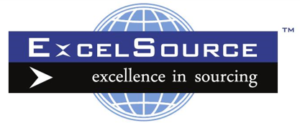Strategic Review
Client Overview
Our client, a market-leading mid-sized service provider, knew their key IT Infrastructure outsource contract (with a leading European outsourcer) was coming up for renewal.
Challenge
The client faced several challenges with business critical service elements provided by their outsourcer and the quality of service not what the client, or their customers expected. The client’s leadership team also believed the service provider was expensive, but had no proof to confront the outsourcer with.
Solution
The client instigated a project to evaluate both the quality and cost aspects of its IT outsourcing contract. Extensive discussions were held with the clients outsourcing provider and a 3rd party was engaged to provide high-level benchmarking data to see how their IT services compared to the market. Both were carried out in terms of cost, but also service performance.
From this study, a gap of about 30% was identified between the market rates and what the client was being charged. However, as is often the case with outsourced services, it is quite difficult to compare one service with another. The high-level benchmark did not provide an apples-for-apples comparison.
As the gap was large enough to consider further, the client’s leadership team decided to take the benchmarking exercise to the next stage. A formal benchmark study by a prominent benchmark organisation would have satisfied the method spelled out in the client’s contract, but it could have taken months to complete and would have been costly.
The alternative route of a tender process was therefore undertaken. Tender suppliers were told it would be split into two phases. Phase 1 would serve for benchmarking, and phase 2 would be carried out with a shortlist of suppliers, allowing the service to be transformed into an up-to-date managed IT service.
The incumbent supplier was invited to respond.
At the end of the Phase 1, the proposals received varied greatly in terms of detail and understanding of the client’s services. However, it was clear that a number of suppliers had a better understanding of the client’s requirements and quoted service levels that exceeded current levels at a cost that reaffirmed there was now a 32% cost differential.
The incumbent supplier was again invited to respond, but could not provide a firm offer that reflected market reality.
Phase 2 of the tender process took place and a shortlist of preferred suppliers was created. From that, contracts were awards to five new providers. Contractually, the client was protected (as far as possible) with back-to-back SLAs and common Terms to mimic an umbrella agreement. This risk the client felt they could manage themselves. The incumbent supplier was retained for one element of service and from the five suppliers, one was heavily bias towards offshoring and the others were not.
Benefit
The net result of the project was a newly transformed service with a new IT architecture fit for the coming years. A relatively small investment was required to see a 40% p.a. saving, along with) for superior service levels than the client had ever had from its previous single supplier.
